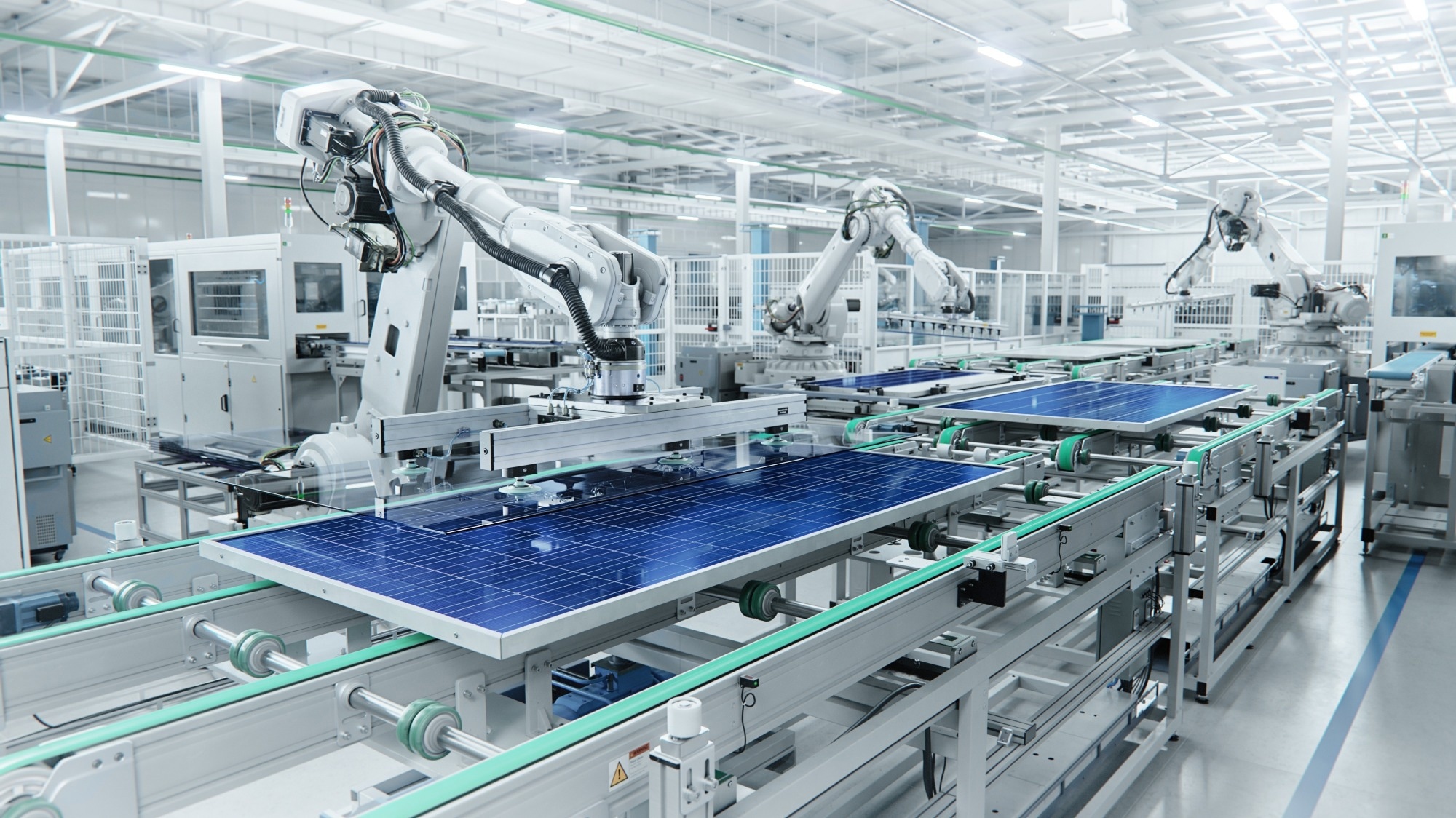 By Taha KhanReviewed by Lexie CornerAug 27 2024
By Taha KhanReviewed by Lexie CornerAug 27 2024
Energy materials are specifically designed or selected for their ability to store, convert, or generate energy, making them essential in applications such as renewable energy production, electric vehicles (EVs), and grid storage. With the growing demand for sustainable and efficient energy solutions, energy materials are becoming increasingly important.

Image Credit: IM Imagery/Shutterstock.com
This article provides a comprehensive overview of key energy materials and their applications, highlighting their significance across various industries.
Types of Energy Materials
Energy materials can be categorized based on their function—whether for energy storage, conversion, or generation—or by their specific applications and technologies. Here, we explore energy materials used in batteries, solar energy, and fuel cells.
Batteries
Energy materials in batteries typically consist of three main components: the anode, cathode, and electrolyte. The choice of energy storage materials directly affects the battery’s capacity, charge/discharge rates, and lifespan. 1, 2
For example, in lithium-ion batteries, the anode is often made from graphite, serving as a host for lithium ions during charge and discharge cycles. The cathode usually comprises transition metal oxides like lithium cobalt oxide (LCO). The electrolyte, which can be liquid, solid, or gel-based, facilitates the movement of lithium ions between the anode and cathode, playing a crucial role in battery performance.1, 2
The ongoing development of new materials for these components is driving improvements in battery efficiency, energy density, and safety.
Solar Energy
Solar energy has gained significant attention due to its renewable and abundant nature.
The materials used in solar cells are fundamental for converting sunlight into electricity, and the efficiency of this conversion relies heavily on the properties of the energy-conversion materials used. For instance, in solar cells, the bandgap of the material determines the efficiency of light absorption and conversion.3,4
Crystalline silicon is the most common material used, dominating the market due to its high efficiency and stability.3 Thin-film materials like cadmium telluride (CdTe) are also used in solar cells for their flexibility and lightweight properties, making them suitable for applications like portable solar devices; however, they generally offer lower efficiency compared to crystalline silicon.4
Similarly, perovskite solar cells are gaining significant attention for their potential high efficiency and low manufacturing costs. A 2020 study investigated the hybrid perovskite material CH₃NH₃PbBr₃, exploring its structural, electronic, optical, elastic, and thermoelectric properties using first-principles calculations.5
Results revealed that CH₃NH₃PbBr₃ exhibits a direct bandgap of 2.26 eV, making it suitable for both photovoltaic and thermoelectric applications. The material also demonstrated a high absorption coefficient and malleable nature, highlighting its potential in high-temperature thermoelectric devices. These findings underscore the material's versatility in solar energy and thermoelectric technologies.5
Fuel Cells
Fuel cells generate electricity through electrochemical reactions, typically involving hydrogen and oxygen. The key components of a fuel cell include the electrodes, electrolyte, and catalyst.6
In hydrogen fuel cells, platinum or its alloys are commonly used for the electrodes due to their effectiveness in facilitating the necessary electrochemical reactions. In proton exchange membrane (PEM) fuel cells, the electrolyte is typically a solid polymer membrane made from perfluorosulfonic acid (PFSA) materials like Nafion, which offers high proton conductivity and chemical stability.7
The materials used in fuel cell catalysts and membranes are crucial for facilitating the electrochemical reactions that generate electricity. The choice of these materials directly impacts the efficiency and durability of fuel cells, which are increasingly being used in clean energy technologies.
Applications of Energy Materials
Energy materials play a central role in various industrial sectors. In renewable energy sectors, for example, solar panels rely on advanced materials to convert natural resources into usable energy.
Research and development in solar cell materials have led to novel materials with improved efficiency and durability. For instance, in a 2023 study, researchers developed more stable perovskite solar cells (PSCs) by integrating a fluorinated polymer into the perovskite crystalline films.8
This polymer, β-poly(1,1-difluoroethylene), reduced defect density and optimized the crystal structure, resulting in PSCs that achieved power conversion efficiencies (PCE) of up to 24.6 % over an 18 mm² area.
The enhanced stability was demonstrated, with cells maintaining over 90 % of their efficiency after 3,000 hours of testing and withstanding repeated temperature cycling between -60 °C and 80 °C without degradation. This research highlights a significant advancement in the durability of PSCs under varying environmental conditions.8
The EV industry heavily depends on advanced battery materials. Researchers are continuously working on developing new materials, such as solid-state electrolytes and lithium-sulfur batteries, to improve driving ranges, reduce costs, and enable faster charging times.9
Battery energy storage systems (BESS) also use lithium-ion batteries to balance supply and demand on the electrical grid, improve grid stability, and integrate renewable energy sources. 10
Future Outlooks
The ongoing research and development of energy materials are critical for the future of many industries. These materials are essential for producing and storing the energy necessary to power sectors like renewable energy, transportation, and grid management.
Future advancements will likely focus on improving the performance, cost-effectiveness, and environmental impact of these materials, ensuring they meet the growing global demand for sustainable and efficient energy solutions.
More from AZoM: A Powerful Passion for Battery Chemistry
References and Further Reading
- Kong, L., Tang, C., Peng, H. J., Huang, J. Q., Zhang, Q. (2020). Advanced energy materials for flexible batteries in energy storage: A review. SmartMat. https://doi.org/10.1002/smm2.1007
- Cheng, X. B., Liu, H., Yuan, H., Peng, HJ., Tang, C., Huang, JQ., Zhang, Q. (2021). A perspective on sustainable energy materials for lithium batteries. SusMat. https://doi.org/10.1002/sus2.4
- Battaglia, C., Cuevas, A., De Wolf, S. (2016). High-efficiency crystalline silicon solar cells: status and perspectives. Energy & Environmental Science. https://doi.org/10.1039/C5EE03380B
- Kapadnis, RS., Bansode, SB., Supekar, AT., Bhujbal, PK., Kale, SS., Jadkar, S. R., Pathan, HM. (2020). Cadmium telluride/cadmium sulfide thin films solar cells: a review. ES Energy & Environment. https://dx.doi.org/10.30919/esee8c706
- Choudhary, S., Shukla, A., Chaudhary, J., Verma, A. S. (2020). Extensive investigation of structural, electronic, optical, and thermoelectric properties of hybrid perovskite (CH3NH3PbBr3) with mechanical stability constants. International Journal of Energy Research. https://doi.org/10.1002/er.5786
- Sajid, A., Pervaiz, E., Ali, H., Noor, T., Baig, MM. (2022). A perspective on development of fuel cell materials: Electrodes and electrolyte. International Journal of Energy Research. https://doi.org/10.1002/er.7635
- Maiti, T. K., Singh, J., Dixit, P., Majhi, J., Bhushan, S., Bandyopadhyay, A., Chattopadhyay, S. (2022). Advances in perfluorosulfonic acid-based proton exchange membranes for fuel cell applications: A review. Chemical Engineering Journal Advances. https://doi.org/10.1016/j.ceja.2022.100372
- Li, G., et al. (2023). Highly efficient pin perovskite solar cells that endure temperature variations. Science. https://doi.org/10.1126/science.add7331
- Deng, Y., Li, J., Li, T., Gao, X., Yuan, C. (2017). Life cycle assessment of lithium sulfur battery for electric vehicles. Journal of Power Sources. https://doi.org/10.1016/j.jpowsour.2017.01.036
- Berger, M., Kocar, I., Farantatos, E., Haddadi, A. (2021). Modeling of Li-ion battery energy storage systems (BESSs) for grid fault analysis. Electric Power Systems Research. https://doi.org/10.1016/j.epsr.2021.107160
Disclaimer: The views expressed here are those of the author expressed in their private capacity and do not necessarily represent the views of AZoM.com Limited T/A AZoNetwork the owner and operator of this website. This disclaimer forms part of the Terms and conditions of use of this website.